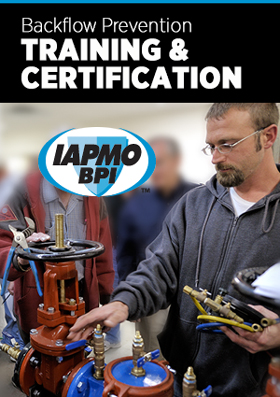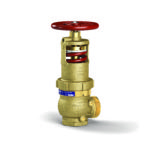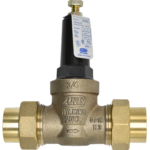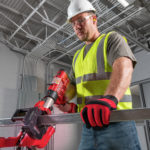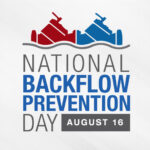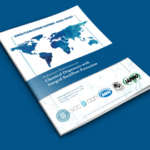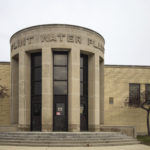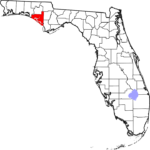I am starting this article sitting poolside at a hotel in Singapore. My plane to a backflow tester class at a military base in the region had mechanical issues and as a result provided me with several days in this beautiful area. It is rich in history and culture here. From where I sit I can see no less than twelve tower cranes being used in a massive amount of high rise construction. Tall buildings are everywhere and road construction seems to be taking place on almost every street and highway. The airport is the nicest I have ever seen and would put almost every airport in the United States to shame. The area is crowded, busy, and full of life. Singapore, like the United States, is a developed, first world country. It has a public works system and water quality standards that meet both the World Health Organization standards and the standards of the United States Environmental Protection Agency. It does however do things a little different than we do in the United States and being a stranger from a foreign land in the area made me look a little closer at the plumbing and mechanical systems I was encountering. The fact that the company we were doing the training for had put me in three different hotels in four days also allowed me to look at systems in multiple locations. Sightseeing also allowed me a chance to see both residential and commercial installations. I found things very American and things not so familiar to me.

Left: The very American Hooters restaurant Right: The iconic Singapore “Merlion”
I took a tourist river cruise yesterday on the Singapore river. It was a Saturday and even though this is a business trip I thought a little local research on the Singapore water system could be considered a reasonable use of my time. I was surprised to learn that the Singapore river and the artificial harbor where the tour began is consider a reservoir and supplies a large portion of the drinking water to Singapore.
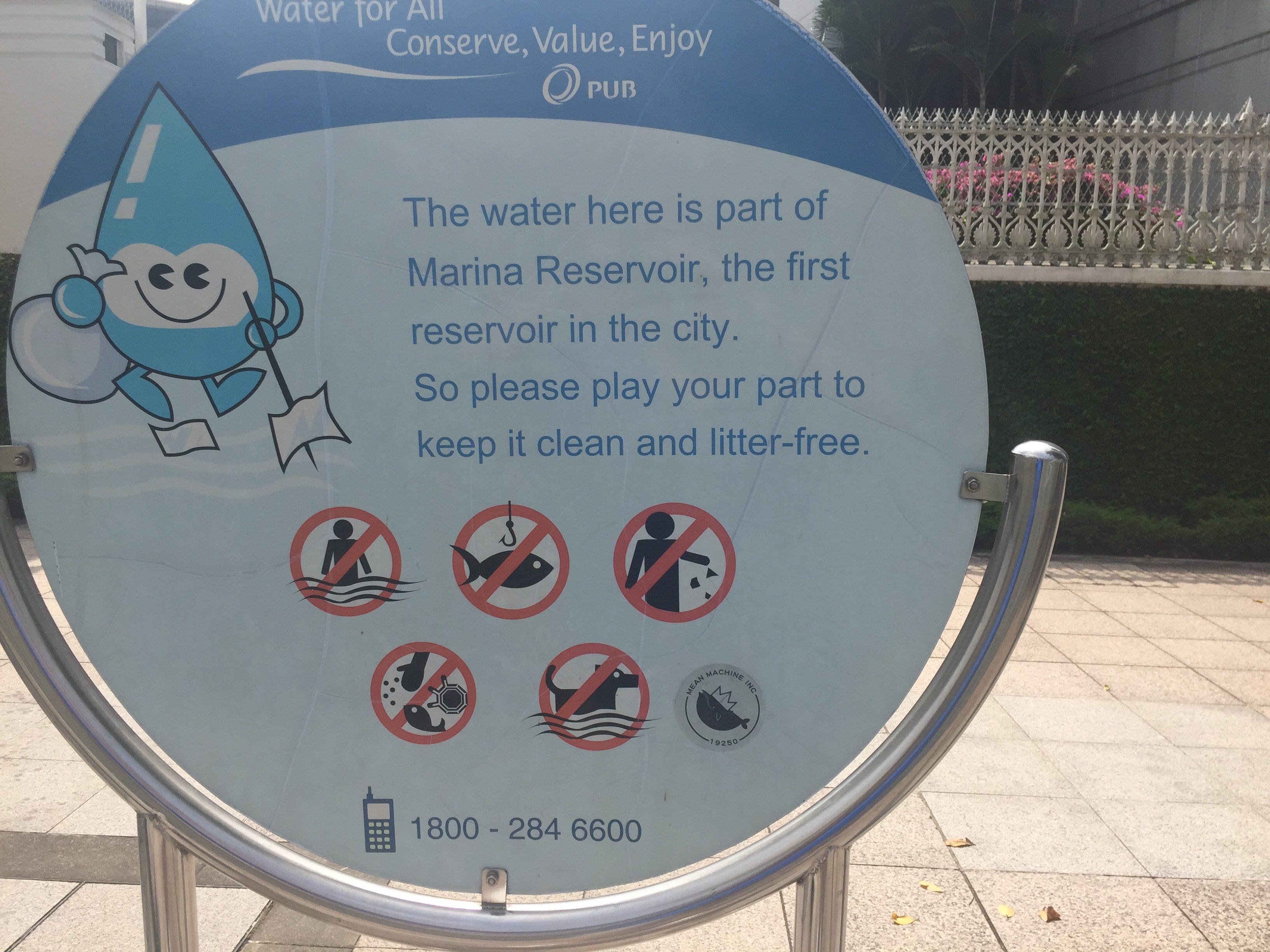
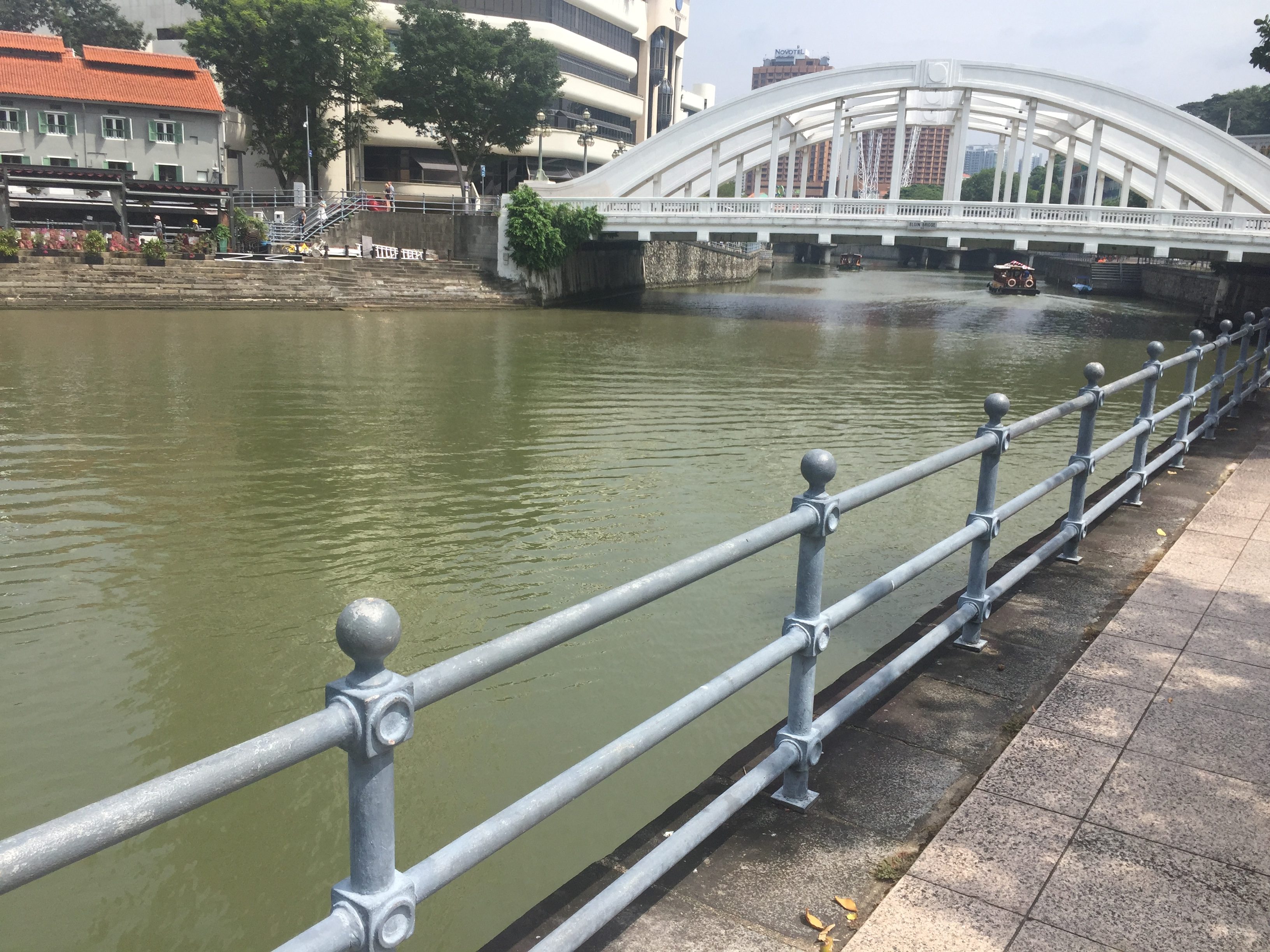
Singapore River
At first looking at the water I thought that as a supply of fresh water to the population, having tour boats running up and down the river might be an issue. Singapore also has a very large and busy Riverwalk with shops and restaurants all along the Singapore river. Having spent some time in San Antonio on their Riverwalk and thinking about the idea of using that water to supply the drinking water to the city of San Antonio I had some questions about water quality. However, in thinking about the area I live in, Scranton, Pennsylvania I considered where my drinking water comes from, an open-air reservoir named Lake Scranton.

Lake Scranton
The quality of the water before treatment in both the Singapore River and Lake Scranton may be similar. The quality after treatment may also be similar. Perhaps we should look at what happens after the water leaves the water treatment plant.
This is where we may find differences especially with water reuse and backflow protection. There did not seem to be an aggressive use of backflow preventers in Singapore and I found many questionable installations of water supplies to fixtures.
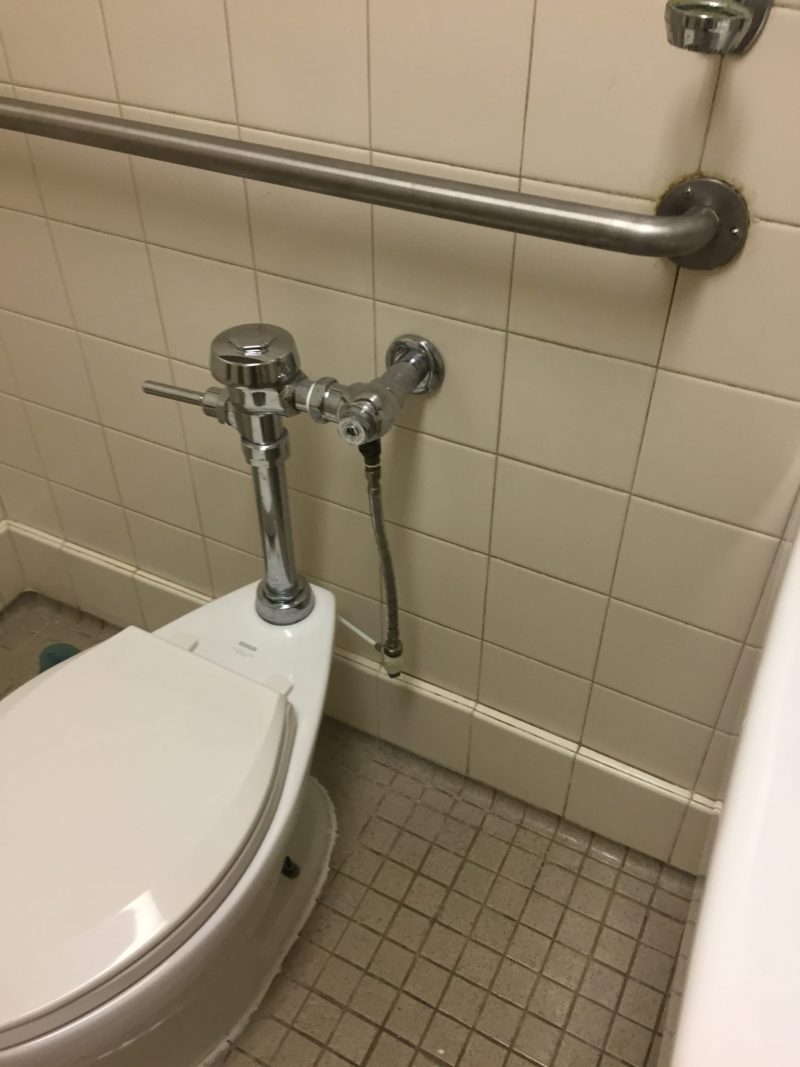
I also saw no sign of any type of a backflow containment program, even at some very tall structures and commercial buildings.
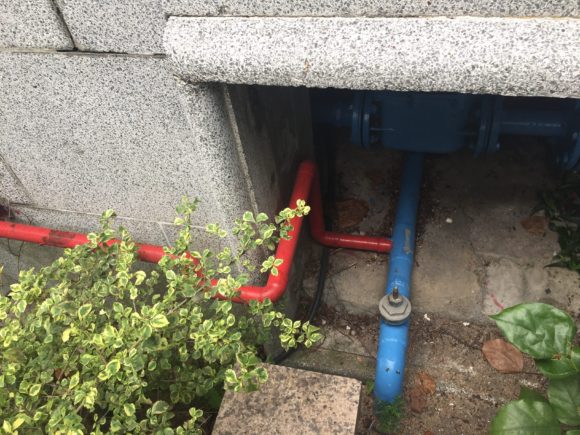
There did however seem to be a large number of water reuse systems in use to conserve the use of potable water. They seem to be working harder on the recycling and conservation side of things than we do here in the United States. To be honest, in the City of Scranton where I reside and in many areas of the United States we have little to no water reuse or recycling. Singapore on the other hand started a significant program in 2003. Singapore is an island. It is surrounded by water, why would it need to recycle water? It boils down to a question of both cost and a commitment to the environment. While recycling water is surely the right thing to do, in many areas it is simply cheaper for the water supplier and the consumer to send the used water into the sanitary system or in some areas back into whatever body of water that is available.
When I started in the trade in 1977 I remember water cooled pumps and air conditioning systems that simply dumped the water back into the sanitary sewer system. Not a very green or efficient thing to do but energy and water costs were low and people were less aware of the importance of conserving water. At that time most people didn’t even consider saving water or fuel. We thought the supply was and would always be endless. The first car I purchased when I was a senior in high school was a 1968 Firebird which got about eight miles to the gallon. Gas was twenty-eight cents a gallon so who cared about fuel efficiency. When you stomped on the gas and that four-barreled carburetor opened the Firebird was like a rocket. L-60 tires on the back and Keystone Classic chrome wheels all around, I was living the dream with that car. They don’t make cars like that anymore. We have fuel efficiency standards for automobiles. Things have changed for the better and an awareness of our environment is important to most people. We were late to the game with many efficiency standards when compared to Europe and places like Singapore who moved more quickly to become energy efficient and water conservation minded.
I remember when here in the United States, we started installing water saver water closets that used 3.5 gallons per flush. We then moved to 1.6-gallon units and now to 1.2-gallon per flush water closets. Everyone in our country has a better understanding of how important conservation of our natural resources is. When we look at our world it is important to get a perspective on how many people live on our planet and how and where that population is growing. Looking back to 1750 we had less than one billion people living on earth. By 2050 our planet will be home to over ten billion people with the largest percentage of growth occurring in the developing areas of our planet.
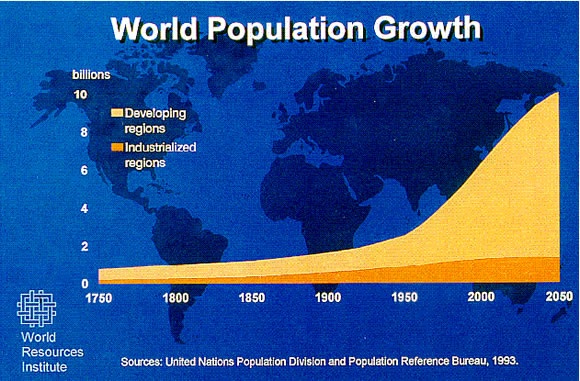
That’s ten billion individuals using the same resources that not so long ago far less people were using. Even now we see drought, famine, and poverty claiming lives. It is estimated that a child under the age of five dies every forty-five seconds on our planet because of a lack of access to clean water and clean sanitation. These are unacceptable statistics. And the problem may even become larger as an increase in the world’s population strains water systems in developing areas to the breaking point.
From the cross-connection perspective, recycled water systems in facilities are something that needs to be looked at very carefully. Jurisdictions around the country are considering regulations that would require new homes and commercial building to use recycled water for irrigation, the flushing of urinals and toilets, and other non-potable uses. The presence of additional pressurized water systems within any facility raises the possibility of cross-connections being created and the likelihood of a backflow incident occurring. However, the water saving and importance of being proactive in conserving the potable water supply can outweigh most cross-connection concerns. Properly trained installers, designers, and most importantly inspectors are vital in these situations to ensure any facility using multiple water systems is installed correctly. Public education is also a very important in these situations to make certain that consumers understand the hazards that can result from any interconnection of the recycled and potable systems. Periodic inspections of these systems will help guarantee the integrity of both systems.
Another concern is how we deal with the infrastructure we use to deliver potable and recycled water to our homes and facilities. To be honest in the United States we are failing in many areas of the country with public infrastructure including roads, bridges, the electric grid, mass transit, including airports and rail systems and last but not least water and waste systems. In these areas the United States is falling farther and farther behind the rest of the developed world. The price this lack of investment will be enormous. Looking at the never-ending problems in Flint, Michigan. Numbers as high as $1.5 billion to replace lead water services have been estimated and the final cost for this work along with bottled water, lawsuits, health issues for individuals within the affected area and other factors will continue to grow for years to come.
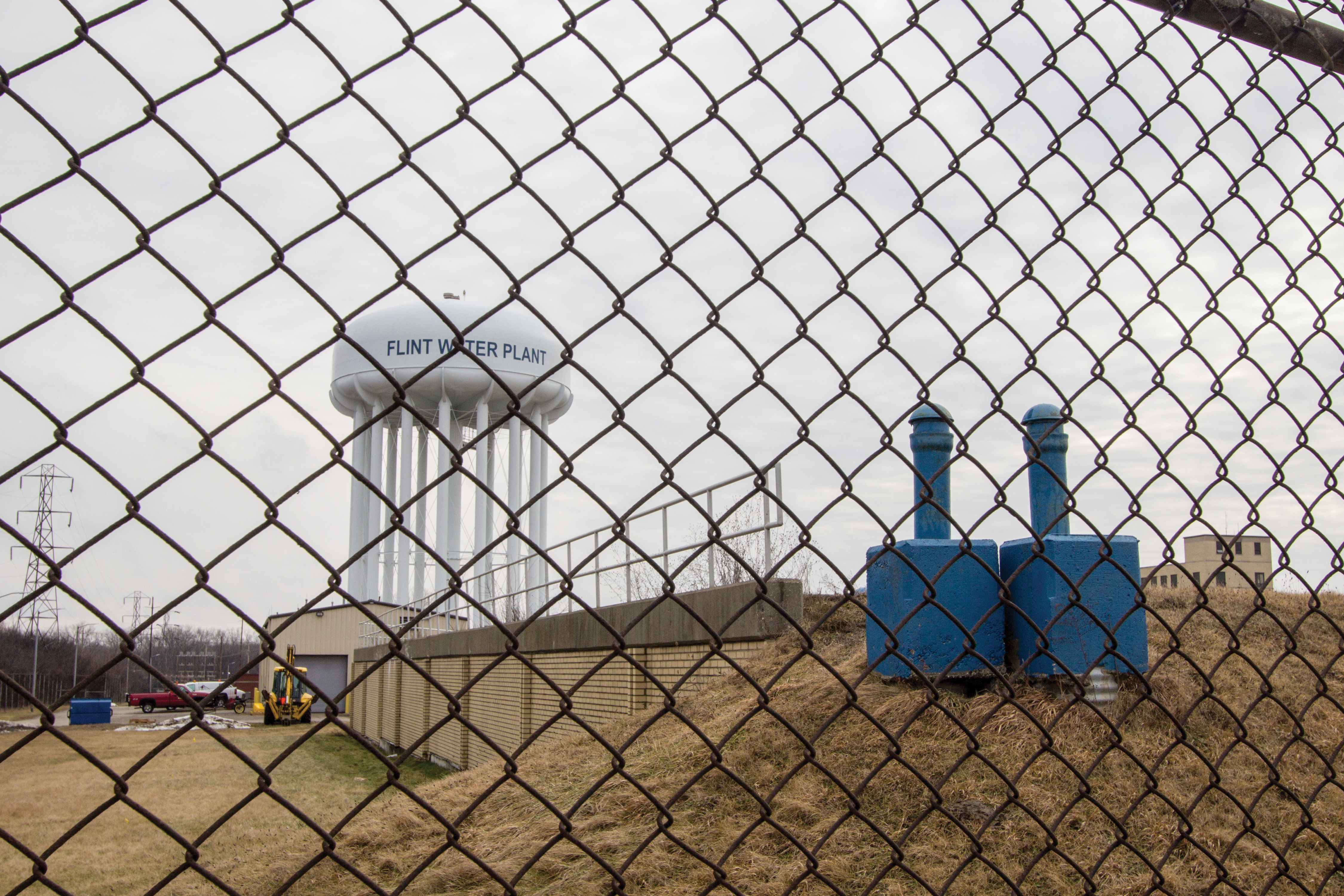
Over all, across the United States repairing our aging and neglected water and wastewater systems could cost $1.3 trillion or more. This estimate comes from the American Society of Civil Engineers. We need to do this to improve water quality, protect natural ecosystems and ensure a reliable supply for our cities, agriculture and industry.
Across the country, our water systems leak billions of gallons of water each day. This is water that has been treated, chlorinated, and sent out to reach consumers which instead simply leaks into the ground in route to homes and businesses. It has been said the number may be as high as six billion gallons per day.
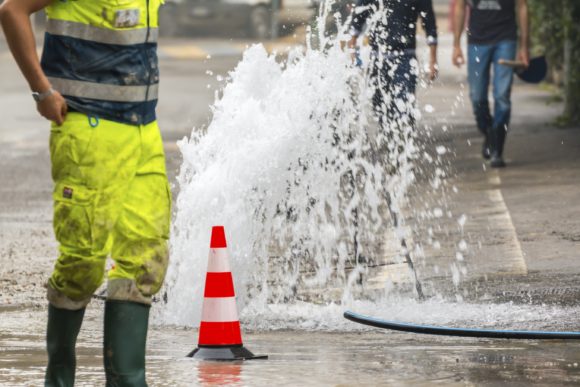
road spurt water beside traffic cones
This is enough water to feed the needs of California, our largest and most populated state with their entire daily water supply. It is an obscene waste of energy and cost that must be borne by everyone using the water system. We also need to remember every water main break increases to probability of a backflow incident occurring. It is time for the United States to start looking to the future and investing in the things we need to maintain and improve our standard of living, our energy grid, our water and waste water systems, transportation hub, airports, bridges, highways, and other vital parts of our lives and economy.
When I finally left Singapore after finishing my class I flew from Changi Airport. The immigration process went flawlessly. The airport has a train which connects all of the airports terminals together and runs every few minutes. The airport is very large, modern, beautiful, clean, well run, well-staffed, and a place the people of Singapore can be proud of. After a plane change in Japan I flew to Chicago’s O’Hare Airport. I wish I could say that these to facilities were comparable, but I can’t. The Chicago Airport is a much older facility and that is a factor in any comparison. But on any scale, it lags behind and is not the place it should be. Immigration was a long, slow process which took over an hour. My flight flew into Terminal Five which does not connect to Terminals, One, Two, or Three. You are forced to leave airport security, then exit the terminal, board a shuttle bus which arrives about every ten minutes. When I arrived, there were at least three hundred and fifty people in line in front of me. The shuttle bus then leaves the airport and gets onto the highway to drive to the other terminals. On the day I arrived traffic was bad, which is a normal day in Chicago. The wait to get on the shuttle bus was about one hour in line. The bus made it to Terminal One in another thirty minutes. I exited the bus there and ran to Terminal Three where my flight to Philadelphia was leaving from. The TSA security line in Terminal Three was very long but being TSA Pre-Check approved I was able to get through in about ten minutes and ran to the gate arriving as they were loading the final passengers. The time I had from the flight landing and the next flight taking of was almost four hours and I just made the outgoing flight. We need to do better with infrastructure in this and many other situations. It will take time and will need to be funded properly but the longer we wait the more it will cost and the farther we will fall behind. The United States leads the world in many ways, we need to begin the process of public investment in these areas so that if we are talking about infrastructure, the environment, conservation, energy, transportation, and the economy we are always innovating and leading the way.
About the Author |
|
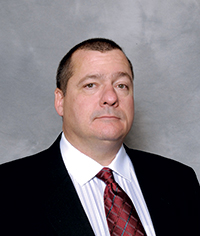 |
Sean is a 40 year member of the United Association Local 524 Scranton Pa. He has worked in all phases of the plumbing and mechanical industry and is a licensed master plumber. Sean is a Past President of the American Society of Sanitary Engineering. Sean is also the member of the ASSE Cross-Connection Control, Technical Committee. Sean is employed by IAPMO as the Vice President of Operations for the IAPMO Backflow Prevention Institute. |






 07 Aug 2018
07 Aug 2018
 Posted by Sean Cleary
Posted by Sean Cleary 





